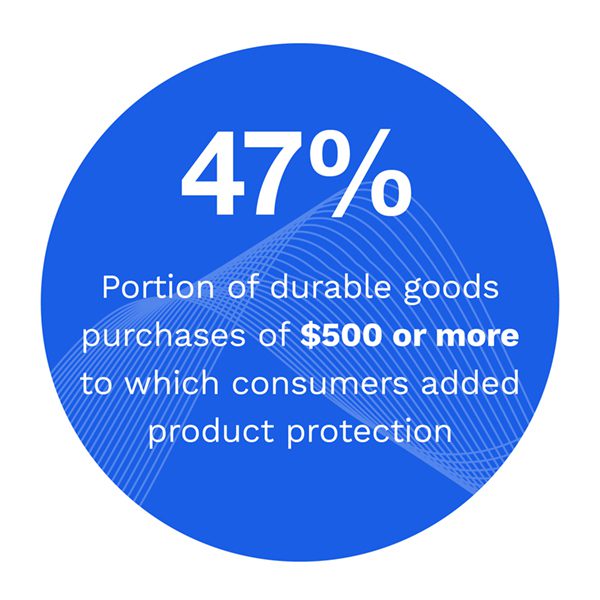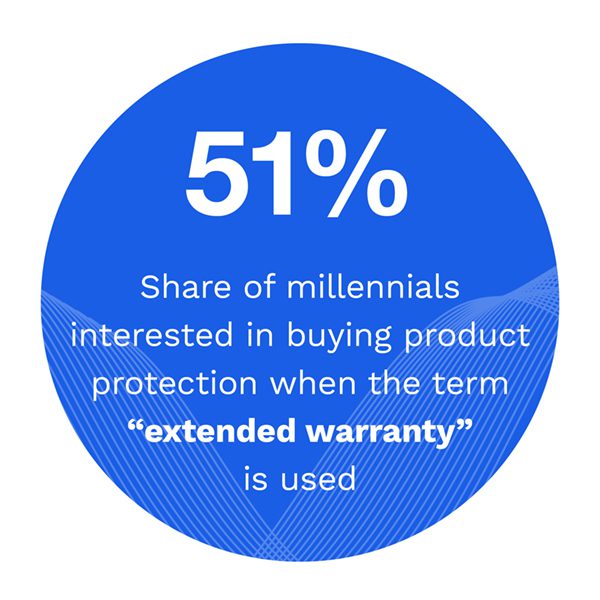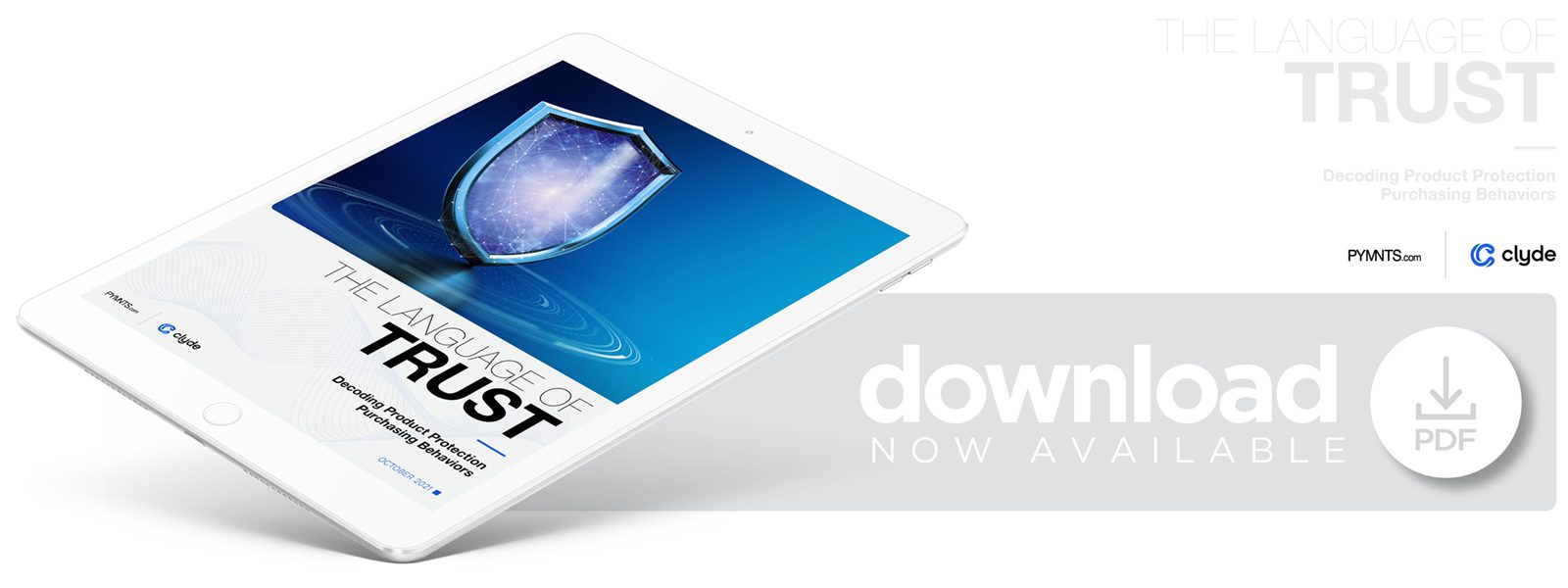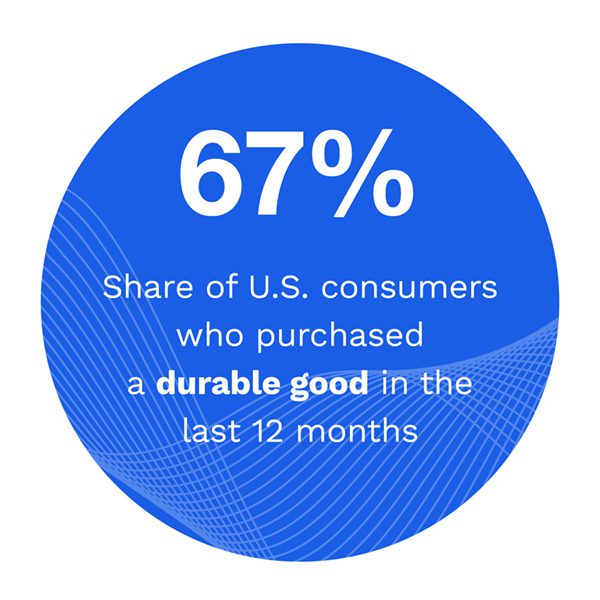NEW DATA: US Consumers Skip Purchase Protection Plans For 70% of Durable Good Purchases

Consumers all know the frustrating feeling of a broken product that they expected to keep using for months or years to come. Product protection offers a solution to this problem that can give shoppers peace of mind — yet relatively few decide to buy coverage for their durable goods.
PYMNTS research finds that United States consumers buy product protection for 30% of their durable goods purchases in seven categories: furniture, electronics, handbags, mattresses, jewelry, luggage and exercise equipment. They decline it 31% of the time, however, and are never offered the chance to buy it in the remaining 39% of cases, reflecting a significant missed opportunity for providers.
What drives consumers to buy — or skip — product protection? The Language Of Trust: Decoding Product Protection Purchasing Behaviors, a PYMNTS and Clyde collaboration, seeks to answer this question. We surveyed 2,519 U.S. consumers to learn what influences their decisions about adding coverage plans to their durable goods purchases.
 PYMNTS research reveals that trust is a critical factor. Thirty-eight percent of shoppers who bought product protection for their latest durable goods purchase, or would have been interested in doing so if they had been offered a plan, said they were motivated by trust in the provider to follow through when replacement or repair is needed. Nineteen percent of shoppers who declined a plan, or would not have wanted one, said they do not believe the provider will actually cover repairs or replacements as promised.
PYMNTS research reveals that trust is a critical factor. Thirty-eight percent of shoppers who bought product protection for their latest durable goods purchase, or would have been interested in doing so if they had been offered a plan, said they were motivated by trust in the provider to follow through when replacement or repair is needed. Nineteen percent of shoppers who declined a plan, or would not have wanted one, said they do not believe the provider will actually cover repairs or replacements as promised.
Another central factor is the cost of a purchase. Shoppers are much more likely to buy plans for more expensive purchases, adding it for 47% of items costing $500 or more, but just 17% of cheaper ones. PYMNTS research also shows that more than half (56%) of consumers likely to add product protection regardless of other factors have incomes above $1 00,000.
00,000.
Other factors affect consumers’ decision-making, including the type of product and whether they believe the manufacturer’s basic warranty is enough. PYMNTS also found that consumers in younger age groups respond more favorably to the term “extended warranty” than “product protection,” while the opposite is true for those in older brackets.
To learn more about what drives consumers to buy product protection, download the report.


